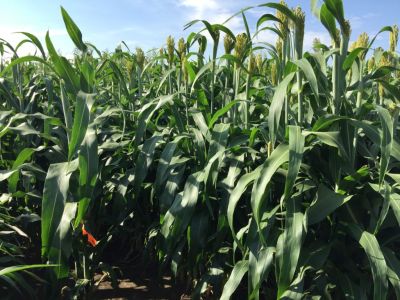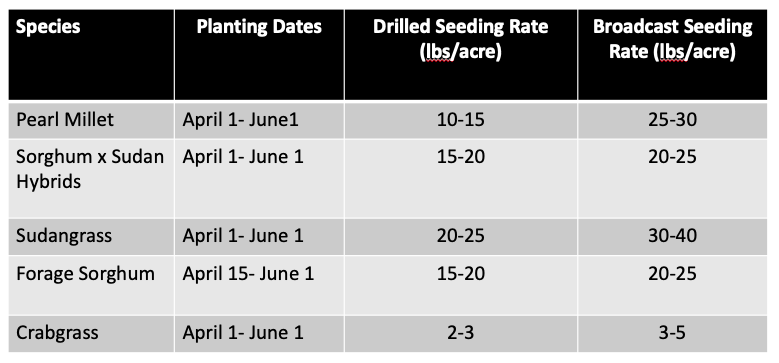Source: Texas A&M AgriLife Extension Forage Fax | Feb. 15, 2019
ForageFax is by the Texas A&M AgriLife Extension Department of Soil & Crop Science, offering timely forage and pasture information.
Believe it or not, we can actually grow some forages other than Bermudagrass and Bahiagrass in Texas! Warm season perennial grasses, such as bermudagrass and bahiagrass, make great foundations for pastures in Texas. However, there are additional forages that can be utilized for pasture or hay production in Texas. As always, when selecting forage species make sure to match species and variety to your location (soil type and average rainfall) as well as to your production system goals. For assistance in selecting a forage species and/or variety contact your local county extension agent.
Summer annual grasses that can be grown in Texas include:
- Pearl millet
- Forage sorghum
- Sorghum sudangrass hybrids
- Sudangrass
- Crabgrass
These forages can be valuable in an overall forage system. Each of these grasses has unique growth characteristics and must be managed appropriately for optimum production. Warm season annuals require that you prepare the soil, plant seed, and fertilize each year.
Pearl Millet is adapted to sandy, acidic soils. Avoid grazing or mowing pearl millet too short, as that can kill the stand. If you leave 4 to 6 inches of plant stubble after harvest, pearl millet will regrow. The stand can be harvested again in about 4 to 6 weeks.
Forage Sorghums can grow 8 to 13 feet tall and produce a substantial amount of dry matter. Forage sorghums grow best in fertile, well-drained soils that have good water holding capacity. Forage sorghums are best used in a single hay cutting when plants are in bloom or early dough stage. These sorghums have large stems; crushing them with a mower/conditioner will make them dry faster.

Sorghum-sudan hybrids grow 4 to 7 feet tall, have smaller stems, and dry faster than the forage sorghums. Sorghum sudan hybrids can yield more than any other summer annuals. These hybrids can be used for grazing or silage, but they are difficult to dry for hay. Do not allow horses to graze sorghum-sudans because they contain an unidentified toxin that can cause spinal cord degeneration and even paralysis.
Sudangrass is a fast growing warm-season annual that can produce good forage, though usually not as much as the sorghum-sudangrass hybrids. True sudangrass has fine stems and regrows rapidly after being grazed. Sudangrass needs fertile soils that drains well.
Crabgrass is commonly considered a weed, but it can be a high-quality summer forage. Crabgrass grows best in well-drained soils and, if allowed to reach seed stage, can reseed itself year after year. Crabgrass forage has excellent quality and palatability, but the yield varies according to soil fertility and rainfall.
Planting dates and seeding rates for selected warm season annual grasses.

Planting dates and seeding rates for selected warm season annual grasses.
For more details on variety selection, fertilization and utilization: Warm Season Annual Forage Grasses for Texas.
Vanessa Corriher-Olson, Forage Extension Specialist
Soil & Crop Sciences, Overton, TX
[email protected]
Texas A&M AgriLife Extension Service
Texas A&M University System
